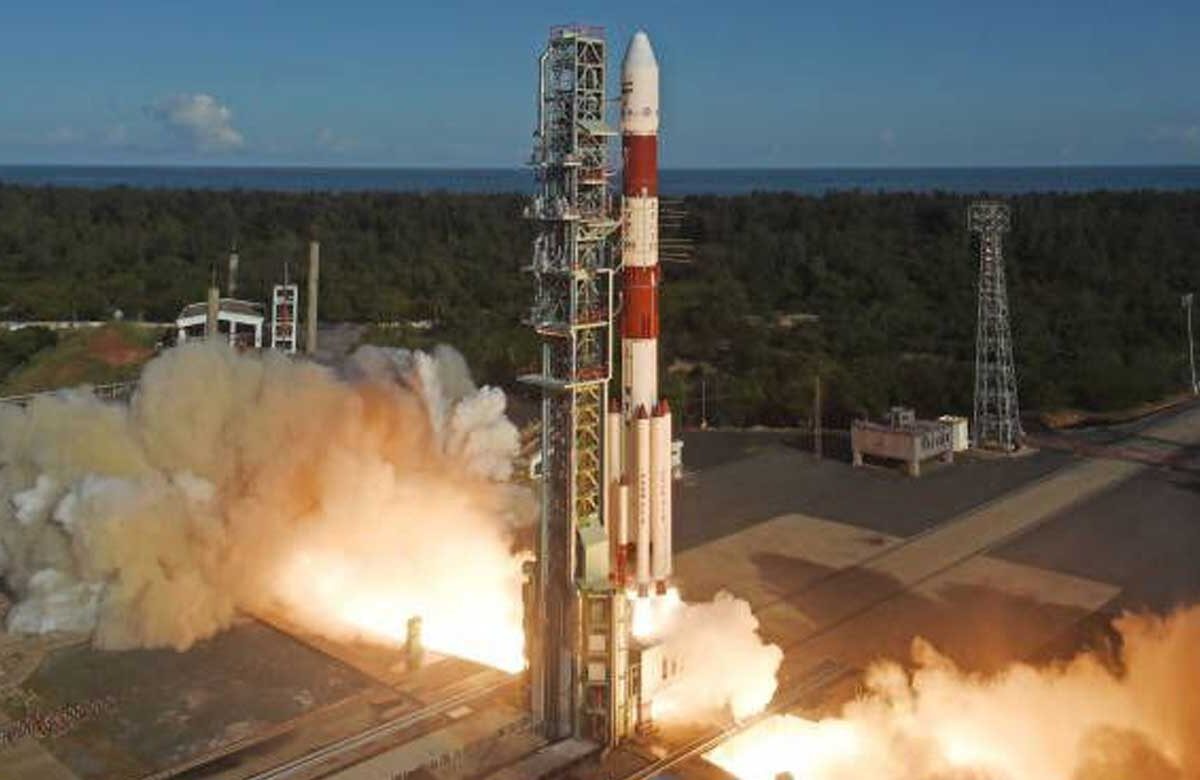ISRO’s PSLV-C61 Mission Fails After Third-Stage Anomaly Halts EOS-09 Deployment
The Indian Space Research Organisation (ISRO) experienced a significant setback on Sunday as its 101st mission, PSLV-C61, carrying the EOS-09 Earth observation satellite, failed to complete its mission due to a technical malfunction.

Sriharikota: The Indian Space Research Organisation (ISRO) experienced a significant setback on Sunday as its 101st mission, PSLV-C61, carrying the EOS-09 Earth observation satellite, failed to complete its mission due to a technical malfunction.
Table of Contents
PSLV-C61 Liftoff Successful Until Stage Three
The Polar Satellite Launch Vehicle (PSLV-C61) lifted off as scheduled from the Satish Dhawan Space Centre (SDSC) in Sriharikota, aiming to place the EOS-09 satellite into a Sun Synchronous Polar Orbit (SSPO).
The launch proceeded normally through the first and second stages, but trouble struck during the third stage.
Third-Stage Anomaly Causes Mission Failure
ISRO Chairman Dr. V. Narayanan confirmed that although the third-stage motor ignited as expected, an anomaly was observed during its operation, which prevented the satellite from reaching orbit.
“Today, we attempted the 101st launch from Sriharikota, the PSLV-C61 carrying the EOS-09 mission… The third stage motor ignited perfectly; however, during its operation, an anomaly was observed, and the mission could not be completed successfully,” Narayanan said.
ISRO later shared an update on X (formerly Twitter):
“Today 101st launch was attempted, PSLV-C61 performance was normal till 2nd stage. Due to an observation in 3rd stage, the mission could not be accomplished.”
Importance of the Third Stage in PSLV
The third stage of the PSLV is a solid rocket motor responsible for providing high thrust in the upper atmosphere, generating a thrust of approximately 240 kilonewtons. It is a critical component in placing the satellite into its final orbit.
Also Read: Asaduddin Owaisi to Turkey: Don’t Believe Pakistan’s False Islamic Propaganda
EOS-09: A Key Satellite for Strategic and Civil Use
EOS-09 was designed to deliver reliable, continuous remote sensing data to support applications in:
- Border surveillance
- National security
- Agriculture
- Forestry
- Flood monitoring
- Disaster management
The 1,710 kg satellite was to be deployed into a sun-synchronous orbit, ensuring consistent lighting for high-resolution Earth observation.
Mission Objectives and Future Steps
EOS-09 was part of India’s initiative to enhance sustainable and responsible space operations. It was modeled after EOS-04, launched in 2022, and was intended to serve operational users with high-frequency imaging capabilities.
Despite the failure, ISRO stated it will conduct a detailed analysis and return with corrective measures.
“We will come back after analysis,” said Dr. Narayanan, indicating the organization’s continued commitment to innovation and mission reliability.
